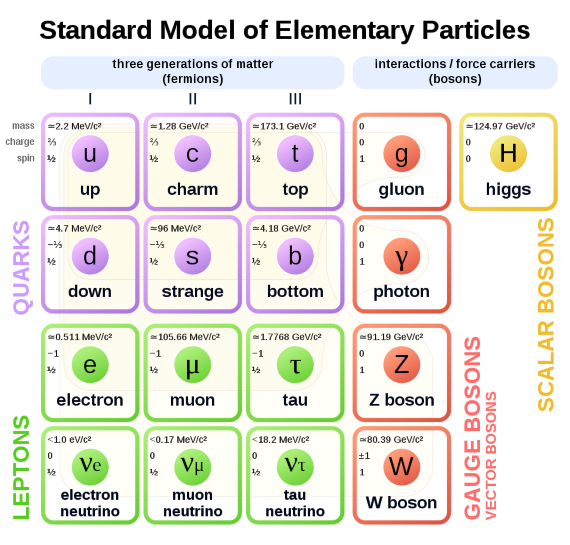Until the 20th century, physics only dealt with matter and its interactions with energy and the universe. However, in recent decades, physicists have had to redefine the concept of matter, and limit it to ordinary matter, because new types have been appearing that need their own names. Dark matter, antimatter or exotic matter are some examples… and, without a doubt, among all the new theoretical types of matter, the least known and most radically different would be strange matter, as it would literally break our laws of physics.
That would be the case if we ever managed to detect the existence of strange matter, which was first proposed in 1978 by two MIT scientists after a theoretical trip to the heart of a neutron star, which is like the corpse of a massive supergiant star.
Stars live in a state of equilibrium between two forces: one of expansion, driven by powerful nuclear reactions in their interior, and another of compression, caused by gravity. When stars run out of fuel, the force of gravity gains the upper hand and the dying star begins to collapse in on itself. The compression is absolutely brutal. For a star like our Sun (with a diameter of almost one and a half million kilometres), what remains after the death process is completed is a corpse barely the size of a city (a dozen or so kilometres across), known as a neutron star.
The Vela Pulsar is a neutron star that spins on itself at high speed. Credit: NASA
The intense pressure pushes matter to the limit until it fractures. In the first phase, the compression becomes so great that there is no space left between atoms, which strain to resist the pressure (the electron clouds push up against each other), but the gravity is strong enough to break that barrier and compresses the atoms until their nuclei are stuck together. In this process, almost all the electrons and positrons are converted into neutrons, leaving only an ultra-compact mass of neutrons.
The matter that makes up a neutron star is called neutronium, which is remarkable for its density. A cup of neutronium coffee would be as heavy as the whole of Mount Everest, because the star’s gravity has compressed all the particles of a mountain into the volume of a cup of coffee.
A nuclear pasta restaurant
In the heart of neutron stars, neutronium is found in two phases (similar to ice and water) which generates curious shapes the deeper we penetrate into the dead star. Near the surface neutronium is homogeneous, but as we descend small spheres soon appear, similar in appearance to gnocchi. If we continue to go deeper, the gnocchi is compressed and gives way to some cylindrical rod-like structures that look like spaghetti. Further still, some flat sheets emerge that evoke lasagne; appropriately, this neutron pantry is known as nuclear pasta.
Things start to get weird
Near the core, things get really strange. The pressure is so intense that not even neutrons are able to remain stable, at which point they break down into their fundamental elements —quarks— forming an ocean of subatomic particles. Under the intense pressure, there is one type of quark that can stay stable: the strange quark. Grouped together they form strange matter, a perfectly dense, stable and literally indestructible material.
One of the most bizarre characteristics of strange matter is that it is contagious. According to the hypothesis of Barry Freedman and Larry McLerran, when strange matter comes into contact with normal matter it generates more strange matter. Just like the story of King Midas, everything it touches turns into strange matter. It is analogous to how fire operates in an enormous blaze; at a sufficient temperature the fire converts everything around it into fire, but on a quantum level.

A universe of strange matter
Given that there is only one object that is more difficult to escape from than a neutron star: a black hole, in principle it would seem that strange matter is confined in a safe place where it cannot infect the universe. However, just like in prison movies, a host of circumstances can make a daring escape possible.
Sometimes, neutron stars interact with a companion of the same nature; what begins as an innocent stellar dance, ends as one of the most violent phenomena in the universe, the collision of two neutron stars. The energy released is so enormous that on Earth we have managed to detect the gravitational waves, distortions in the very fabric of reality, that emerge from these encounters.
This is the chance for strange matter to escape its confinement. Ejected at high velocity by the collision, remnants of strange matter, known as strangelets, fly through space like poisoned darts.
If one of these strangelets were to hit something like a star or a planet, it would take just seconds for a Midas-like reaction to turn all the ordinary matter into a ball of strange matter, relentlessly compressing the struck object. This reaction would in turn generate new strangelets that would fly off again in all directions, creating a chain reaction. It is thus only a matter of time before all the objects in the universe become infected and turn into strange matter.
Safe from strange matter?
Collisions of neutron stars are not uncommon, so there could be strangelets flying like stray bullets all across the galaxy, but the space between stars is very large and hitting some planetary system would be very unlikely. Similarly, although the models that predict the existence of strange quarks are solid, it is not so clear that this strange matter can be maintained outside the nucleus of neutron stars. Strangelets are only an idea that has some theoretical support but has not yet been proved. So, we can breathe (gaseous matter) easy… for now.
Comments on this publication